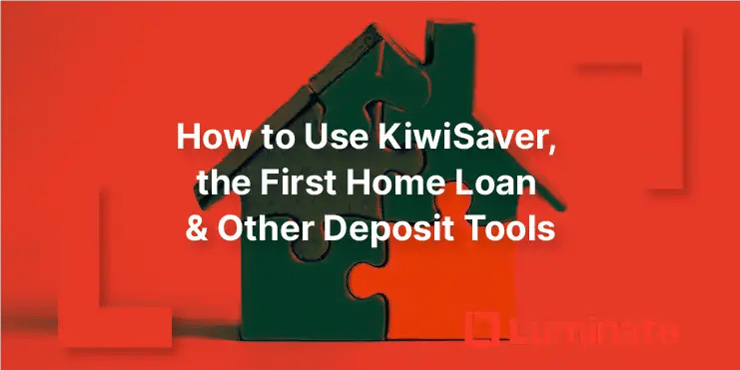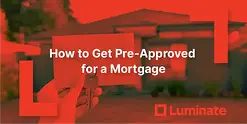Using KiwiSaver, First Home Loan & Deposit Tools Together in NZ
 By
Trent Bradley
·
16 minute read
By
Trent Bradley
·
16 minute read

Saving a house deposit can feel overwhelming, especially in New Zealand's challenging property market. The good news? You don't have to rely on just one savings source. By strategically combining multiple deposit tools, you can reach your homeownership goal faster than you might think.
Table of Contents
- Understanding Your Available Deposit Tools
- 1. KiwiSaver First-Home Withdrawal: Your Foundation
- 2. Kāinga Ora First Home Loan: The Game-Changer for Low Deposits
- 3. Developer Cashbacks: Extra Boost for New Builds
- 4. Bank Cashback Contributions: Post-Settlement Support
- 5. Family Assistance: Gifts and Guarantees
- Putting It All Together: Strategic Combinations
- Deposit Tools Comparison: What Stacks and What Doesn't
- Step-by-Step: How to Combine These Tools Successfully
- Real Success Stories: How Buyers Combined These Tools
- Why This Combined Approach Works
- Key Considerations & Pro Tips
- Frequently Asked Questions About Using KiwiSaver and First Home Loan Together
- Final Thoughts
Key Takeaways
- Stack your deposit sources strategically—combine KiwiSaver withdrawal (your balance minus $1,000), First Home Loan (5% deposit minimum), personal savings, family gifts, and developer cashbacks to buy with far less than the traditional 20% deposit requirement
- The First Home Grant is gone but better tools remain—while the government discontinued the $5,000-$10,000 HomeStart Grant in May 2024, the Kāinga Ora First Home Loan (5% deposit) and full KiwiSaver withdrawal rights are still available and can get you into homeownership years faster
- KiwiSaver is your foundation deposit source—after three years of contributions, you can withdraw your entire balance minus $1,000 (including all personal, employer, and government contributions plus investment returns), which often provides $30,000-$60,000 toward your deposit
- The 5% First Home Loan is the game-changer for limited deposits—regional price caps range from $450,000 (rural) to $875,000 (Auckland), with income limits around $95,000 (singles) or $150,000 (couples), allowing you to buy with just $25,000-$44,000 instead of needing $100,000-$175,000
- Developer cashbacks ($10,000-$15,000) count toward your deposit for new builds—these incentives from property developers can be applied directly to your deposit with lender approval, effectively boosting your purchasing power by 2-3% without any additional savings required
- Bank cashbacks ($2,000-$5,000) don't count as deposit but solve the moving crisis—paid after settlement, these contributions from lenders can't be used for your deposit but perfectly cover your moving costs ($1,500-$2,500), lock changes ($200-$500), and help build your emergency maintenance fund
- The real strategy is in the combination not the individual tools—a couple in Wellington with $60,000 combined KiwiSaver, $15,000 savings, and a $10,000 family gift can purchase a $650,000 home with 13% deposit plus receive $2,500 bank cashback post-settlement, entering the market 3-5 years earlier than saving 20% alone
Quick Answer: You can combine KiwiSaver withdrawal (balance minus $1,000), Kāinga Ora First Home Loan (5% deposit minimum), personal savings, family gifts, and developer cashbacks to purchase your first home in NZ. Bank cashbacks ($2,000-$5,000) are paid after settlement and help with moving costs.
In May 2024, the New Zealand Government discontinued the First Home Grant (also known as the KiwiSaver HomeStart Grant), which previously provided up to $10,000 for couples or $20,000 for new builds. While this was disappointing for many aspiring homeowners, other powerful tools remain available—and when used together strategically, they can still help you achieve homeownership with a relatively small deposit.
This comprehensive guide explains how to combine KiwiSaver, the First Home Loan, cashback incentives, and other deposit sources to maximize your purchasing power and get into your first home sooner.
Understanding Your Available Deposit Tools
Before diving into strategies, let's clarify what's currently available to first-home buyers in New Zealand:
What's Still Available (2025)
- KiwiSaver first-home withdrawal – Access most of your KiwiSaver balance
- Kāinga Ora First Home Loan – Buy with as little as 5% deposit
- Developer cashbacks – Up to $15,000 for new builds
- Bank cashback contributions – $2,000-$5,000 after settlement
- Family gifts – Non-repayable financial assistance
- Personal savings – Your own accumulated funds
What's No Longer Available
- First Home Grant / KiwiSaver HomeStart Grant – Discontinued May 2024
The discontinuation of the grant means first-home buyers need to be more strategic about combining the remaining tools effectively.
1. KiwiSaver First-Home Withdrawal: Your Foundation
Your KiwiSaver balance is often the largest component of a first-home buyer's deposit, making it the foundation of your strategy.
Eligibility Requirements
To withdraw your KiwiSaver for a first home, you must:
- Have contributed to KiwiSaver for at least three years
- Be purchasing your first home (or haven't owned a home in the past 3 years)
- Intend to live in the property (not as an investment)
- Meet the price caps for your area (if applicable to your withdrawal method)
How Much Can You Access?
You can withdraw your entire KiwiSaver balance minus $1,000, which must remain in your account. This includes:
- Your personal contributions
- Employer contributions
- Government contributions ($521.43 annually if you contribute at least $1,042.86)
- All investment returns earned over time
Example: If your KiwiSaver balance is $45,000, you can withdraw $44,000 for your deposit.
The Application Process
Your lawyer or conveyancer handles the KiwiSaver withdrawal application on your behalf. Here's the timeline:
- Offer accepted: Once you have a conditional sale and purchase agreement
- Application lodged: Your lawyer applies to your KiwiSaver provider (2-3 weeks before settlement)
- Processing time: Typically 10-15 business days
- Funds released: Money transfers directly to your lawyer's trust account
- Settlement day: Funds combine with your other deposit sources
Critical timing note: Start the withdrawal process at least 2-3 weeks before your intended settlement date. Delays can jeopardize your purchase if funds aren't available on time.
Maximizing Your KiwiSaver Balance
If you're still building your KiwiSaver and have time before purchasing:
- Increase your contribution rate from 3% to 4%, 6%, or 8%
- Ensure you're getting employer match (employers match up to 3%)
- Contribute at least $1,042.86 annually to receive the full government contribution
- Review your fund type – growth funds typically offer higher returns over 3+ years
- Make voluntary contributions if you have extra savings capacity
2. Kāinga Ora First Home Loan: The Game-Changer for Low Deposits
The Kāinga Ora First Home Loan is a government-backed lending scheme that enables eligible first-home buyers to purchase with as little as 5% deposit. This is the most powerful tool available for buyers who don't have a full 20% deposit saved.
How It Works
Unlike traditional bank lending (which typically requires 10-20% deposit), the First Home Loan allows you to borrow up to 95% of the property value. Kāinga Ora underwrites part of the loan, reducing the lender's risk and enabling them to lend with less security.
Participating lenders include:
- Select major banks (ANZ, ASB, BNZ, Westpac)
- Building societies (e.g., Nelson Building Society)
- Credit unions
- Some non-bank lenders
Eligibility Criteria
To qualify for a First Home Loan, you must meet all of the following:
Income Limits (2025 approximate figures):
- Single buyer: Around $95,000 gross annual income
- Couple or multiple buyers: Around $150,000 combined gross income
- Income limits vary by region and are reviewed regularly
Price Caps: Properties must be purchased at or below regional price caps, which vary significantly:
- Auckland: Approximately $875,000
- Wellington: Approximately $650,000
- Christchurch: Approximately $550,000
- Provincial centers: $450,000-$550,000
- Rural areas: Lower caps apply
Note: These caps change regularly. Check the current Kāinga Ora website for exact figures in your target area.
First-Home Buyer Status:
- You haven't owned a home before, OR
- You haven't owned a home in the past three years
Residency:
- New Zealand citizen or permanent resident
Property Standards:
- Property must meet Kāinga Ora building and location standards
- Must be your primary residence (not an investment)
The 5% Deposit Advantage
With a First Home Loan, your 5% deposit can come from:
- KiwiSaver withdrawal
- Personal savings
- Family gifts
- Developer cashbacks (for new builds)
- Any combination of the above
Example: For a $600,000 home, you only need $30,000 (5%) as your deposit instead of $120,000 (20%) required by traditional lending.
Interest Rates and Terms
First Home Loans typically carry interest rates similar to standard home loans from the same lender. However, because you're borrowing at a high loan-to-value ratio (LVR), you may face:
- Low equity premiums: Additional 0.25%-1.00% added to your rate
- Slightly higher standard rates: Compared to loans with 20%+ deposit
- Limited product options: Fewer flexible loan structures available
Despite these potential costs, the ability to enter the market years earlier often outweighs the additional interest expense.
3. Developer Cashbacks: Extra Boost for New Builds
If you're purchasing a new build or off-the-plans property, developer cashbacks can significantly boost your deposit or reduce your upfront costs.
How Developer Cashbacks Work
Developers offer cashback incentives (typically $10,000-$15,000) to attract buyers to new developments. These funds can be:
- Applied to your deposit (with lender approval)
- Used to cover additional purchase costs
- Paid at settlement or upon reaching specific construction milestones
Types of Cashback Offers
Fixed cashback: A set dollar amount (e.g., "$12,000 cashback") Percentage-based: A percentage of purchase price (e.g., "2% cashback") Upgrades in lieu of cash: Free appliances, landscaping, or interior upgrades Deposit contributions: Developer contributes directly to your deposit
Important Considerations
Lender requirements: Banks need to know about cashbacks and may adjust their lending calculations accordingly. Full transparency is essential.
Price inflation risk: Sometimes cashback offers come with inflated base prices. Compare the total cost to similar properties in the area.
Timing: Clarify exactly when the cashback is paid—at signing, at title, or after construction completion.
Tax implications: Generally, cashbacks for your primary residence aren't taxable, but confirm with your accountant.
Example in action:
- Purchase price: $650,000 (new townhouse)
- Developer cashback: $13,000
- Your KiwiSaver: $35,000
- Personal savings: $7,000
- Total effective deposit: $55,000 (8.5%)
With the First Home Loan, this puts you in a strong position even though you started with just $42,000 in actual cash.
4. Bank Cashback Contributions: Post-Settlement Support
Many banks offer cashback incentives to attract new mortgage customers. These contributions range from $2,000 to $5,000, depending on your loan size.
How Bank Cashbacks Differ from Deposit Tools
Critical distinction: Bank cashbacks are paid after settlement and therefore cannot be counted toward your deposit. However, they're incredibly useful for:
- Moving costs
- Furniture and appliances
- Home insurance premiums
- Emergency maintenance fund
- Immediate repairs or improvements
Current Market Offerings (2025)
Cashback amounts vary by lender and market conditions:
- Major banks: $2,000-$4,000 for loans over $400,000
- Some lenders: Up to $5,000 for larger loans ($750,000+)
- New-to-bank customers: Often receive better offers than existing customers
Important Terms
Clawback clauses: If you break your fixed rate or refinance within a specified period (typically 3-4 years), you may have to repay the cashback.
Minimum loan size: Cashbacks usually require a minimum loan amount (e.g., $300,000+).
New customer requirement: Most cashback offers apply only to new mortgage customers, not existing ones refinancing.
Luminate Tip: While cashbacks are attractive, never choose a lender solely based on this incentive. A slightly lower interest rate over the life of your loan will save far more than a one-time cashback. Consider the total cost over your expected loan term.
5. Family Assistance: Gifts and Guarantees
Family support remains one of the most common ways first-home buyers bridge the deposit gap.
Cash Gifts
Family members (usually parents) can provide non-repayable cash gifts to boost your deposit.
Bank requirements:
- Written confirmation: A letter stating the gift is non-repayable
- Source verification: Bank statements proving the funds exist in the giver's account
- Transfer documentation: Evidence of the funds transferring to your account
- Seasoning period: Some lenders require gifts to be in your account for 3-6 months
Guarantor Arrangements
A guarantor (typically a parent) uses equity in their own property as additional security for your loan, enabling you to:
- Borrow with a smaller deposit
- Access better interest rates
- Get approved with a lower income
Critical considerations:
- Guarantor risk: If you default, the guarantor is liable for your debt
- Impact on guarantor's borrowing: Reduces their available equity for other purposes
- Legal advice essential: Both parties should have independent legal counsel
- Exit strategy: Plan for when the guarantee will be released (usually when you reach 20% equity)
Putting It All Together: Strategic Combinations
The real power comes from combining multiple deposit sources strategically. Here are proven approaches:
Strategy 1: Maximum Leverage (5% Deposit)
Best for: Buyers who want to enter the market as soon as possible with minimum savings
Combination:
- KiwiSaver withdrawal: Primary deposit source
- First Home Loan: 5% minimum deposit requirement
- Developer cashback: Adds to deposit for new builds
- Bank cashback: Covers post-settlement costs
Example – Single Buyer, Provincial Center:
- Purchase price: $500,000
- Required deposit (5%): $25,000
- KiwiSaver withdrawal: $27,000 (balance: $28,000)
- Personal savings: $5,000
- Developer cashback: $10,000
- Total deposit: $42,000 (8.4%)
- Bank cashback (post-settlement): $2,000
- Result: Purchased with deposit well above minimum, plus cash buffer after moving in
Strategy 2: Balanced Approach (10% Deposit)
Best for: Buyers with moderate savings who want better loan terms
Combination:
- KiwiSaver withdrawal: Primary source
- Personal savings: Substantial contribution
- Family gift: Tops up to 10%
- Bank cashback: Post-settlement support
Example – Couple, Wellington:
- Purchase price: $650,000
- Target deposit (10%): $65,000
- Combined KiwiSaver: $60,000 (two accounts, minus $2,000)
- Combined savings: $15,000
- Family gift: $10,000
- Total deposit: $85,000 (13%)
- Bank cashback (post-settlement): $3,000
- Result: Strong deposit position, avoided low equity premium, better interest rates
Strategy 3: New Build Maximization
Best for: Buyers purchasing new construction with developer incentives
Combination:
- KiwiSaver withdrawal: Foundation
- Developer cashback: Significant boost
- First Home Loan: Low deposit requirement
- Personal savings: Additional security
Example – Couple, Auckland:
- Purchase price: $875,000 (price cap maximum)
- Required deposit (5%): $43,750
- Combined KiwiSaver: $50,000
- Personal savings: $8,000
- Developer cashback: $15,000
- Total deposit: $73,000 (8.3%)
- Bank cashback (post-settlement): $4,000
- Result: Secured property at maximum price cap with comfortable deposit margin
Deposit Tools Comparison: What Stacks and What Doesn't
| Deposit Tool | Typical Amount | When Paid | Counts Toward Deposit? | Can Combine With |
|---|---|---|---|---|
| KiwiSaver Withdrawal | Balance minus $1,000 | Before settlement | Yes | Everything |
| Personal Savings | Variable | Before settlement | Yes | Everything |
| First Home Loan (5%) | Reduces deposit needed | Part of loan structure | N/A – it's the loan itself | KiwiSaver, savings, gifts, cashbacks |
| Family Gift | Variable | Before settlement | Yes | Everything |
| Developer Cashback | $10,000-$15,000 | At or before settlement | Yes (with lender approval) | KiwiSaver, First Home Loan, savings |
| Bank Cashback | $2,000-$5,000 | After settlement | No | Cannot count toward deposit, but supports post-settlement costs |
Step-by-Step: How to Combine These Tools Successfully
Step 1: Check Your KiwiSaver Eligibility and Balance
Log into your KiwiSaver provider's website to check:
- Your current total balance
- How long you've been contributing
- Your available withdrawal amount (balance minus $1,000)
If you haven't reached three years yet, note when you will and plan accordingly.
Step 2: Assess First Home Loan Eligibility
Review the Kāinga Ora First Home Loan criteria:
- Your gross annual income vs. regional limits
- Your target purchase price vs. regional price caps
- Your first-home buyer status
- Your residency status
Use the Kāinga Ora website calculator or speak with a mortgage adviser to confirm eligibility.
Step 3: Calculate Your Total Deposit Capacity
Add up all your available deposit sources:
Available now:
- KiwiSaver (balance minus $1,000)
- Personal cash savings
- Confirmed family gifts
Potential additions:
- Developer cashbacks (if buying new build)
- Additional savings over the next 3-6 months
Post-settlement support:
- Expected bank cashback amount
This gives you your total purchasing power.
Step 4: Determine Your Maximum Purchase Price
If using First Home Loan (5% deposit):
- Divide your total deposit by 0.05 to find your maximum price
- Example: $40,000 ÷ 0.05 = $800,000 maximum
If aiming for 10% deposit:
- Divide your total deposit by 0.10
- Example: $70,000 ÷ 0.10 = $700,000 maximum
Critical check: Ensure your maximum price is within the Kāinga Ora regional price cap for your area.
Step 5: Get Pre-Approved with a First Home Loan Provider
Contact participating lenders (or work with a mortgage adviser who has access to multiple lenders) and provide:
- Proof of income (3 months' payslips, employment contract)
- KiwiSaver balance statement
- Bank statements (3-6 months showing savings history)
- Identification documents (passport, driver license)
- Details of any debts or financial commitments
Pre-approval gives you:
- Confirmation of your borrowing capacity
- Clarity on interest rates and terms
- Confidence when making offers
- Credibility with sellers and agents
Step 6: Research Properties Within Your Budget
Focus your search on properties that:
- Fall within the Kāinga Ora regional price cap
- Meet bank lending standards (good condition, standard construction)
- Suit your living needs and future plans
- Are in areas with good long-term prospects
If considering new builds: Research developer reputations, compare cashback offers, and understand construction timelines.
Step 7: Make an Offer With Protective Conditions
When you find the right property, include these conditions in your offer:
- Finance approval: Specific to First Home Loan (not just general finance)
- Building inspection: Essential for identifying issues
- LIM report: Confirms council records and consents
- KiwiSaver withdrawal confirmation: Ensures funds will be available
- Sale of existing property: If applicable
Never go unconditional until all these conditions are satisfied.
Step 8: Apply for KiwiSaver Withdrawal
Once your offer is accepted (conditional), instruct your lawyer to:
- Apply to your KiwiSaver provider for first-home withdrawal
- Provide them with the sale and purchase agreement
- Confirm the property meets KiwiSaver criteria
- Allow 2-3 weeks for processing before settlement
Important: Your KiwiSaver provider sends funds directly to your lawyer's trust account—not to you personally.
Step 9: Complete Due Diligence and Secure Formal Approval
Work through each condition systematically:
Building inspection: Book promptly and attend if possible. Review the report with your inspector and lawyer. Negotiate repairs or price adjustments if significant issues emerge.
LIM report: Your lawyer orders and reviews this. Ask them to explain any concerns or unusual items.
First Home Loan approval: The lender will conduct their own valuation and final assessment. Stay responsive to any requests for additional information.
KiwiSaver confirmation: Your lawyer tracks the application and confirms when funds are approved.
Home insurance: Get quotes from 2-3 insurers and arrange coverage to start on settlement day.
Step 10: Go Unconditional and Prepare for Settlement
Once all conditions are satisfied:
- Confirm with your lawyer that you're ready to go unconditional
- Remove conditions according to the timelines in your agreement
- Finalize settlement date and arrangements
- Prepare for moving day
Your various deposit sources (KiwiSaver, savings, gifts, developer cashbacks) will combine in your lawyer's trust account and transfer to the seller on settlement day.
Real Success Stories: How Buyers Combined These Tools
Example 1: Single Buyer - Auckland New Build
Buyer profile:
- Age: 28
- Income: $85,000
- Savings journey: 4 years
Purchase details:
- Purchase price: $875,000 (maximum Auckland price cap)
- Property: New-build apartment in central suburb
- KiwiSaver balance: $45,000 (withdrawal: $44,000)
- Personal savings: $15,000
- Developer cashback: $12,000
- Total deposit: $71,000 (8.1%)
- Bank cashback (post-settlement): $3,000
Outcome: Successfully purchased using First Home Loan. The developer cashback combined with strong KiwiSaver balance allowed entry into Auckland market despite high prices. Bank cashback covered moving costs and new furniture.
Example 2: Couple - Wellington Existing Home
Buyer profile:
- Ages: 31 and 33
- Combined income: $145,000
- Savings journey: 5 years (both with KiwiSaver)
Purchase details:
- Purchase price: $650,000
- Property: 1970s three-bedroom house needing minor updates
- Combined KiwiSaver: $62,000 (withdrawal: $60,000)
- Combined savings: $18,000
- Family gift: $5,000
- Total deposit: $83,000 (12.8%)
- Bank cashback (post-settlement): $2,500
Outcome: Purchased with deposit above 10%, avoiding most low equity premiums and securing competitive interest rates. Bank cashback and savings buffer covered immediate maintenance needs identified in building report.
Example 3: Single Buyer - Provincial Center
Buyer profile:
- Age: 26
- Income: $72,000
- Savings journey: 3.5 years
Purchase details:
- Purchase price: $500,000
- Property: New-build townhouse in growing provincial city
- KiwiSaver balance: $28,000 (withdrawal: $27,000)
- Personal savings: $5,000
- Developer cashback: $10,000
- Total deposit: $42,000 (8.4%)
- Bank cashback (post-settlement): $2,000
Outcome: First Home Loan enabled purchase with comfortable deposit margin above the 5% minimum. Lower provincial prices and developer incentives made homeownership achievable on single income.
Why This Combined Approach Works
Reduces Time to Market Entry
Instead of waiting 5-7 years to save 20% deposit independently, combining tools can get you into homeownership in 3-4 years or less.
Leverages Government Support
The First Home Loan scheme was designed specifically to help buyers like you. Taking advantage of this support is smart financial planning, not "cheating" the system.
Builds Equity Through Ownership
Even with a 5-10% deposit, you start building equity immediately through:
- Mortgage repayments (reducing principal)
- Potential property value increases
- Home improvements that add value
Provides Financial Flexibility
By combining multiple smaller sources rather than relying on one large sum, you maintain financial flexibility and don't drain all your savings.
Maximizes Available Resources
Your KiwiSaver would otherwise sit in the account potentially for decades. Using it for homeownership gives you:
- A tangible asset
- Housing security
- Potential for capital gains
- No more rent payments (just mortgage payments building equity)
Key Considerations & Pro Tips
Timing Is Everything
Start planning 6-12 months before you want to buy:
- Check and maximize your KiwiSaver
- Build personal savings consistently
- Research areas and prices
- Get pre-approved early
Allow proper processing time:
- KiwiSaver withdrawal: 2-3 weeks minimum
- First Home Loan approval: 2-4 weeks
- Building inspection and reports: 1-2 weeks
Don't Stretch Beyond Your Means
Just because you can borrow up to the price cap doesn't mean you should. Consider:
- Your comfortable repayment level (typically no more than 30% of gross income)
- Job security and income stability
- Future plans (family, career changes, further education)
- Emergency fund needs (separate from house deposit)
Keep Some Cash Reserve
Even after settlement, maintain an emergency fund for:
- Unexpected home repairs
- Job loss or income reduction
- Interest rate increases
- Life changes
Recommended reserve: 3-6 months of living expenses, plus $2,000-$5,000 home maintenance fund.
Watch for Market Conditions
In a rising market: Getting in sooner (even with 5% deposit) might be wise, as property gains can outweigh additional interest costs.
In a falling or flat market: Taking extra time to save a larger deposit (10-20%) might be smarter, avoiding potential negative equity situations.
Your mortgage adviser can help you assess current market dynamics and timing.
Get Professional Advice
Work with a mortgage adviser who:
- Specializes in first-home buyers
- Has access to multiple First Home Loan providers
- Can compare offers and structure your application optimally
- Understands how to combine these tools effectively
Engage a good lawyer who:
- Has experience with first-home buyer transactions
- Efficiently handles KiwiSaver withdrawal applications
- Protects your interests throughout the process
Professional fees ($1,500-$2,500 total) are worthwhile investments that can save you thousands and prevent costly mistakes.
Frequently Asked Questions About Using KiwiSaver and First Home Loan Together
Can I use KiwiSaver and the First Home Loan at the same time?
Yes, absolutely. You can withdraw your KiwiSaver balance (minus $1,000) for your deposit and still apply for the Kāinga Ora First Home Loan which allows you to purchase with just 5% deposit. These programs are designed to work together to help first-home buyers enter the market.
What happened to the First Home Grant in New Zealand?
The First Home Grant (also called KiwiSaver HomeStart Grant) was discontinued by the New Zealand Government in May 2024. This grant previously provided up to $5,000 for singles or $10,000 for couples buying existing homes, and double those amounts for new builds. However, KiwiSaver withdrawal and the First Home Loan scheme remain available.
How much can I withdraw from KiwiSaver for my first home?
After contributing to KiwiSaver for at least three years, you can withdraw your entire balance minus $1,000 which must remain in your account. This includes all your contributions, employer contributions, and government contributions, plus any investment returns earned.
What are the income limits for the First Home Loan in 2025?
Income caps vary by region, but typically are around $95,000 for single buyers or $150,000 for households (couples or co-buyers) in most areas. Higher caps may apply in Auckland and other high-cost regions. Check the Kāinga Ora website for current limits in your area.
What are the house price caps for the First Home Loan?
Price caps vary significantly by region. For example, Wellington's cap might be around $650,000, while Auckland could be $875,000 or higher. These caps are regularly reviewed and adjusted. Check the current Kāinga Ora regional price caps before house hunting.
Can I combine a developer cashback with KiwiSaver and First Home Loan?
Yes. Developer cashbacks (often $10,000-$15,000 for new builds) can be used alongside your KiwiSaver withdrawal and First Home Loan. However, lenders may require documentation showing how the cashback is being used and may include it in their deposit calculations.
Do bank cashback contributions count toward my deposit?
No. Bank cashback contributions (typically $2,000-$5,000) are paid after settlement and cannot be counted as part of your deposit. However, they're useful for covering moving costs, furniture, or building your emergency maintenance fund.
Can I use the First Home Loan if I've owned property before?
Generally no, unless you haven't owned a home in at least three years. The First Home Loan is specifically designed for genuine first-home buyers. If you've previously owned investment property or a home, you likely won't qualify unless sufficient time has passed.
How long does the KiwiSaver withdrawal process take?
The KiwiSaver withdrawal application process typically takes 10-15 business days. Your lawyer or conveyancer will handle the application, but you should initiate it at least 2-3 weeks before your intended settlement date to ensure funds are available on time.
Final Thoughts
While the discontinuation of the First Home Grant was disappointing, first-home buyers in New Zealand still have powerful tools available—especially when used strategically together.
By combining your KiwiSaver withdrawal, the Kāinga Ora First Home Loan, personal savings, potential family assistance, and developer or bank cashbacks, you can enter the property market with as little as 5% deposit. This means homeownership is achievable far sooner than if you were trying to save 20% independently.
The key is understanding:
- What you're eligible for
- How much each tool contributes
- How to combine them optimally
- When to act (timing matters)
- Who can help guide the process
Every buyer's situation is unique, and the right combination of tools depends on your income, location, timeline, and property preferences. What works for someone in provincial New Zealand might differ from an Auckland buyer, and a single person's strategy will differ from a couple's approach.
At Luminate Financial Group, we specialize in helping first-home buyers navigate these options and create customized strategies that maximize available resources. We work with you to assess eligibility, structure applications, compare lenders, and coordinate the entire process—from initial planning through to settlement.
Ready to Create Your Personalized First-Home Strategy?
Book a free First-Home Buyer Strategy Session with Luminate.
We'll help you:
- Check your KiwiSaver eligibility and available withdrawal amount
- Assess your First Home Loan eligibility based on income and location
- Calculate your total deposit capacity using all available tools
- Compare participating lenders and their current offerings
- Structure your application for the best chance of approval
- Create a realistic timeline from today to settlement
- Understand exactly what you can afford to purchase
Don't navigate this complex process alone. Expert guidance ensures you use every available tool effectively and avoid costly mistakes.
Contact Luminate Financial Group:
📞 Call 0800 333 400
📧 Email askus@luminate.co.nz
🌐 Visit luminate.co.nz
Your first home is within reach. Let's create the strategy to get you there.

Trent Bradley
Trent Bradley is a New Zealand financial advisor specializing in property-backed finance and investment consulting. With over 26 years of experience running his mortgage broking business, he has helped wholesale investors access high-yield property-backed loan opportunities. For the past 12 years, Trent has led Luminate Finance, a New Zealand finance company dedicated to connecting investors with secure property investment solutions.























